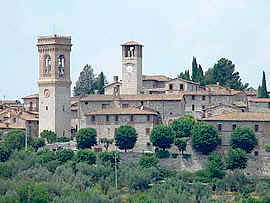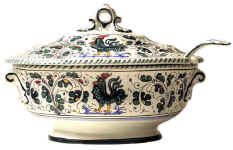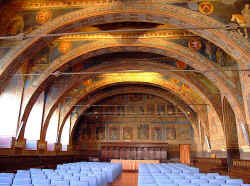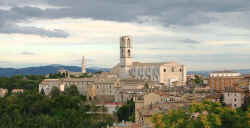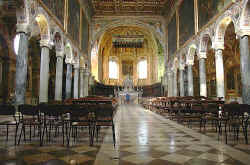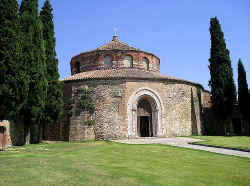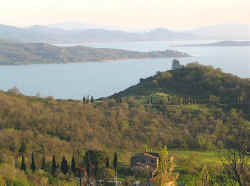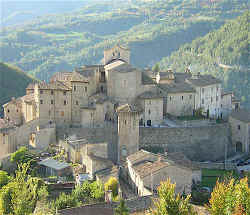Perugia Tourist InformationPerugia is one of the most attractive towns in the area of northern Umbria and southern Tuscany, Italy, both in terms of its ambience and its art, architecture and history. Perugia should on no account be missed if you are visiting central Italy. Perhaps nowhere else in Italy are the material remains of the Etruscans so clearly evident as in this city. The churches and fountain of the main piazza are well-known masterpieces, but there are numerous minor churches of great interest, most notably the Tempio di San Michele Arcangelo.
Perugia :: Piazza IV NovembreThe Piazza IV Novembre forms the centre of Perugia which speads outwards along the steep alleys leading to the walls of the original Etruscan settlement and the ancient gates of Porta Marzia, Porta Sole, Porta Cornea, Porta Trasimena, Porta della Mandorla and the Arco Etrusco. The piazza is one of the most beautiful squares in Umbria, indeed, in all of Italy, surrounded as it is by fine buildings. Perugia :: Fontana MaggioreFontana Maggiore is located at the centre of Piazza IV Novembre. This beautiful mediaeval fountain was erected in the second half of the 12 C at the termination of the aqueduct that carried water to the town from Monte Pacciano. The architect was Fra Bevignate da Perugia and the sculptural decorations were created by Nicola and Giovanni Pisano. The fountain is composed of two superimposed polygonal basins, faced with marble reliefs representing biblical and mythological individuals, saints, animals and personifications of the months, the sciences, the virtues and places. The fountain is one of the finest examples of Gothic art in Italy and was the symbol of the city at the peak of its power and influence. |
||||
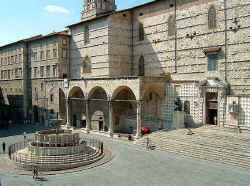
Piazza IV Novembre
and |
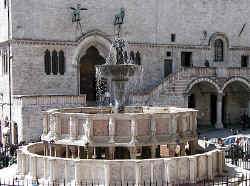
Fontana
Maggiore and |
|||
|
||||
|
||||
|
|
Perugia :: Palazzo dei Priori and Sala dei Notari
Another side of the square is occupied by the Palazzo dei Priori, which was the residence of the principal political authorities of the city during the Middle Ages. Construction was begun in 1298 and the work was completed in 1353. The palace is built of travertine and red and white stone from Bettona, and on the side facing the fountain it has a large stairway and a portal which gives access to the beautiful Sala dei Notari, a rectangular room with a vault supported by huge Romanesque arches and walls covered with frescoes. The façade has two lines of mullioned windows with three lights and a portico.
Sala dei Notari
The side of the palace facing onto Corso Vannucci has an undulating development and is characterised by mullioned windows with three and four lights, and a magnificent round portal. The interior of the Palazzo dei Priori comprises the National Gallery of Umbria – the most important collection of art in Umbria for the Mediaeval and the Modern periods – and, on the ground floor level, the Sala del Collegio del Cambio and the Sala del Collegio della Mercanzia. The Guild of Merchants established its seat in this palace in 1390 and decorated their meeting room with wooden panels, a very unusual decoration, rather rare in Italy. The Guild of Moneychangers occupied this wing of the palace during the half of the 15 C. in this room can be admired the most important work by Perugino in Perugia, one of the most significant examples of Renaissance painting in Italy: a series of frescoes representing the heroes and deities of antiquity and some personified virtues.
